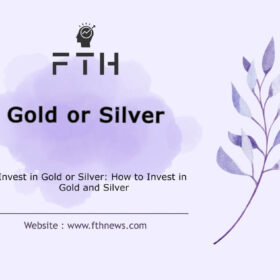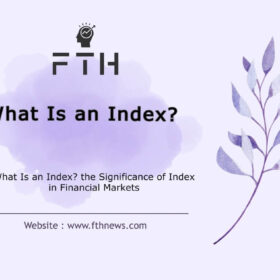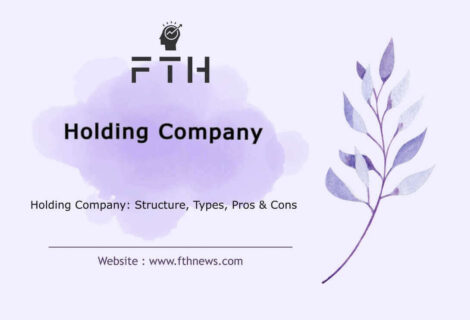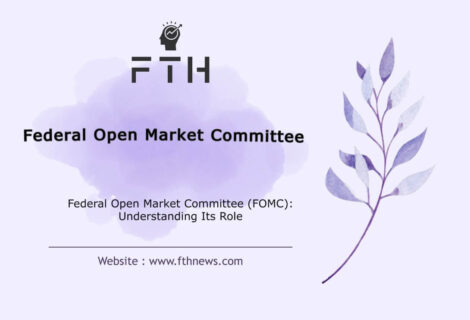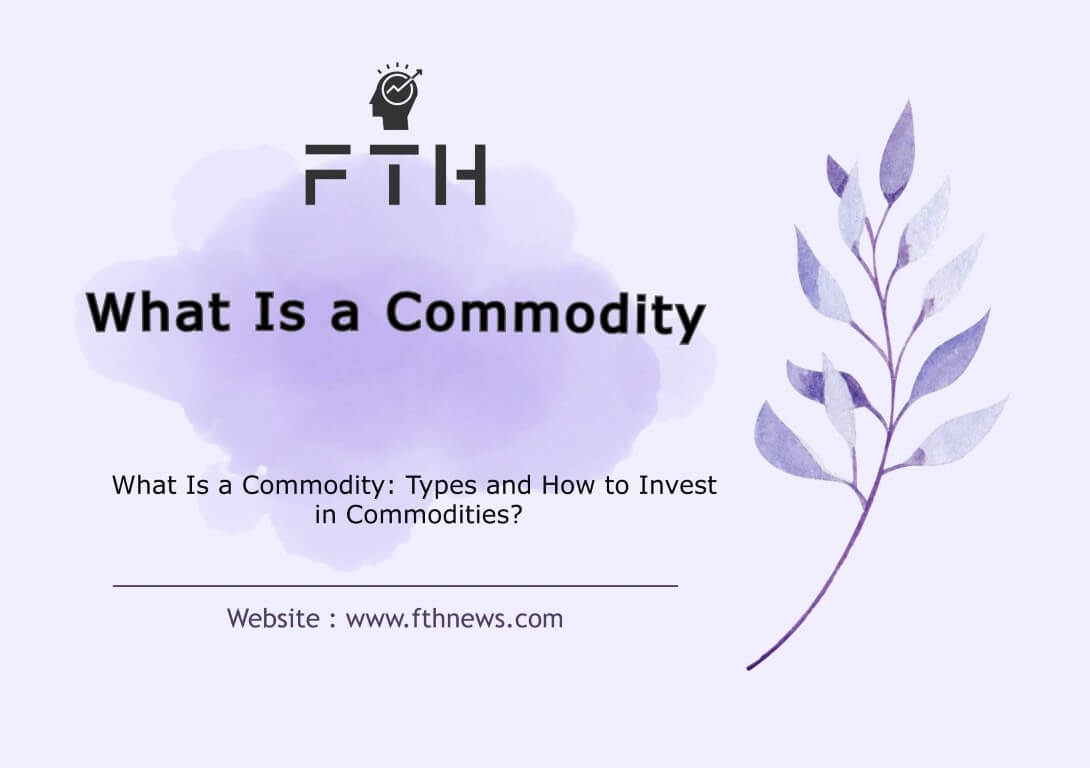
What Is a Commodity: Types and How to Invest in Commodities?
What Is a Commodity ? In the expansive realm of trade, commodities constitute a fundamental category, encompassing a myriad of products and goods. Operating as crucial inputs in the manufacturing of diverse goods and services, commodities find their trading nexus in the esteemed commodity exchange. Within this dynamic marketplace, every commodity, irrespective of its origin, is accorded equal significance and treatment.
What Is a Commodity?
A commodity, in its essence, represents a vast array of goods, spanning from everyday consumer products like sugar, wheat, coffee, corn, and cotton to invaluable tradable resources such as gold, copper, silver, and oil. The classification of a product as a commodity hinges on meeting three indispensable conditions:
- In a “Raw” State:
- Agricultural and industrial products are esteemed in their natural, unprocessed form, defining the raw essence that characterizes commodities.
- Has a Shelf Life:
- Commodities embody goods with a finite lifespan, underlining the temporal nature of these essential components in the global trade landscape.
- Price Variability:
- A distinctive trait of commodities lies in their price dynamics. To be recognized as a commodity, the price must exhibit sufficient fluctuation, thereby justifying the establishment of a dedicated market for the product.
Intriguingly, commodity prices operate outside the direct influence of commodity exchanges. Instead, the intricate interplay of the supply-demand relationship, seasonal factors, natural disasters, and economic developments takes center stage in shaping the dynamic landscape of commodity prices. This nuanced approach ensures a holistic understanding of the forces driving the commodity market and its integral role in global trade.
Exploring the Types of Commodities
Within the intricate tapestry of the Commodities exchange, tradable products unfold into four pivotal categories, each housing a distinctive array of essential goods:
Metals:
Unveiling Precious Elements: This category sparkles with the inclusion of esteemed metals such as gold, silver, platinum, and copper. Renowned for their intrinsic value and industrial applications, these metals form a cornerstone in the realm of commodities.
Energy:
Power Unleashed: Energy commodities dominate this sphere, encompassing vital resources like crude oil, heating oil, natural gas, and gasoline. Serving as the lifeblood of modern industries, these commodities play a crucial role in fueling economic growth.
Livestock and Meat:
From Farm to Table: This category encapsulates the vibrant world of livestock and meat commodities, ranging from lean pigs and pig heads to live cattle and feeder cattle. Reflecting the interconnectedness of agriculture and food production, these commodities are essential elements in the global supply chain.
Agriculture:
Nourishing the World: Agriculture takes center stage in this diverse category, featuring a rich tapestry of commodities. From staple grains like corn, soybeans, and wheat to indulgent crops like cocoa and coffee, and the soft textures of cotton and sweetness of sugar, this segment mirrors the varied bounty of the earth.
The classification of commodities into these distinct types provides investors and traders with a structured understanding of the market, allowing for strategic decision-making and diversified investment portfolios. As global trade continues to evolve, the significance of each commodity type underscores its unique contribution to the interconnected web of the Commodities exchange.
Understanding the Commodity Exchange
The dynamic arena where tradable products and raw materials find their exchange is hailed as the commodity market or commodity exchange. At the forefront of this intricate network stands the illustrious Chicago Mercantile Exchange (CBOT), holding the title of the largest Commodities exchange globally. Within its bustling corridors, the trading of commodity futures unfolds, shaping the trajectory of global commerce.
Soft and Hard Commodities
The vast expanse of commodity markets unfolds into two distinctive realms, each encapsulating a unique set of essential goods:
Soft Commodities:
Nature’s Bounty: Soft commodities epitomize the essence of agricultural abundance. This category includes a diverse array of products such as cocoa, coffee, fruit, sugar, wheat, and corn. Often swayed by uncontrollable factors like weather and seasonality, soft commodities provide investors with a unique avenue to navigate the unpredictable facets of the market.
Hard Commodities:
The Industrial Backbone: Contrasting the soft counterparts, hard commodities delve into the robust world of industry and extraction. Within this realm, commodities like gold, oil, chemicals, and metals take center stage. Renowned for their durability and extensive industrial applications, hard commodities showcase the raw materials underpinning global economic activities.
Understanding this bifurcation into soft and hard commodities not only aids investors in crafting strategic portfolios but also sheds light on the intricate dynamics at play within the commodity exchange. As these markets evolve, the distinction between these categories becomes pivotal in deciphering market trends and making informed decisions within the ever-shifting landscape of global trade.
How to Trade on the Commodity Exchange?
The intricate dance of commodity markets leaves an indelible mark on the global economic canvas, with prices swaying in response to the delicate interplay of economic, political, and supply-demand forces. Characterized by profound economic impacts, these markets are a captivating arena for investors seeking opportunities, albeit in a realm known for its high volatility.
The Volatile Landscape: High-Risk, High-Return Investments
Commodities stand as a beacon of high-risk, high-return potential, drawing investors into a realm where the stakes are as dynamic as the markets themselves. The inherent volatility of commodities creates an environment ripe for significant gains but also demands a strategic approach to risk management.
Platforms of Engagement: Diverse Avenues for Trading
Investors keen on exploring the world of commodity trading can choose from a variety of platforms, each offering a unique vantage point into this dynamic space. These platforms include:
Standard Exchanges:
The Traditional Nexus: Trading on standard commodity exchanges provides a structured and regulated environment. Investors engage in buying and selling commodities through established platforms, ensuring transparency and adherence to market regulations.
Over-the-Counter (OTC) Markets:
Tailored Transactions: For those seeking a more customized approach, over-the-counter markets present an alternative. Here, commodities are traded directly between parties, allowing for flexibility in contract terms and negotiation.
Stock Market:
A Multifaceted Approach: Engaging in commodity trading via the stock market offers investors the convenience of seamlessly integrating commodity transactions with traditional stock investments. This multifaceted approach allows for diversified portfolios and strategic risk management.
Forex (Foreign Exchange):
Global Reach: Forex platforms provide a global stage for commodity trading. Investors can navigate the intricate balance of supply and demand on an international scale, leveraging the flexibility and accessibility offered by the foreign exchange market.
VIOP (Futures and Options Market):
Futures Unveiled: VIOP, or the futures and options market, offers a specialized avenue for commodity trading based on future prices. Investors can speculate on price movements and engage in transactions through standardized contracts.
Considerations for Success
As investors set sail in the unpredictable seas of commodity trading, meticulous research, a clear investment strategy, and a robust risk management plan become the compass guiding their journey. With the potential for both substantial gains and losses, mastering the art of commodity exchange trading requires a nuanced understanding of market dynamics and a steadfast commitment to informed decision-making.
Commodity Prices and Futures Contracts
In the intricate world of commodity trading, the pulse of transactions is often set by the ebb and flow of commodity prices, a dynamic interplay shaped by futures contracts. These contracts, serving as the backbone of the buying and selling process, standardize both the quantity and minimum quality of commodities exchanged on the market, offering a structured framework for investors.
The Foundation: Futures Contracts
Commodity transactions frequently revolve around futures contracts, providing a standardized template that defines the terms of each trade. This includes predetermined quantities and minimum quality standards, creating a level playing field for buyers and sellers. These contracts not only facilitate a transparent marketplace but also play a crucial role in risk mitigation and price discovery.
Participants in the Arena: Hedgers and Speculators
Within the realm of commodity futures trading, two distinct archetypes of investors take center stage, each contributing to the vibrant tapestry of market dynamics:
- Hedgers:
- Shielding Against Price Volatility: Hedgers, driven by the desire to safeguard against potential price fluctuations over time, actively engage in futures contracts. Whether a farmer protecting the value of a crop or a manufacturer securing input costs, hedgers utilize these contracts as financial shields, fortifying their positions in the face of market uncertainties.
- Speculators:
- Capitalizing on Market Movements: On the flip side, speculators navigate the market landscape driven by price movements. These investors, drawn to the potential for profit derived from market fluctuations, engage in futures trading based on their analysis of market trends, economic indicators, and other influencing factors. Speculators play a vital role in maintaining liquidity and fostering price discovery within the commodity market.
As hedgers seek stability and speculators chase opportunity, the commodity market becomes a dynamic arena where forces of supply, demand, and market sentiment converge. The symbiotic relationship between these two investor types not only shapes the current state of commodity prices but also sets the stage for future market conditions.
Risk and Reward: A Delicate Balancing Act
In the world of commodity prices and futures contracts, the delicate dance between risk and reward unfolds. Hedgers mitigate potential losses, while speculators aim to capitalize on price differentials. This intricate balancing act not only influences individual investment strategies but also contributes to the overall resilience and vitality of the commodity market.
In conclusion, as the currents of commodity prices and futures contracts continue to shape the landscape, investors find themselves at the helm of a vessel navigating the seas of possibility. The judicious use of futures contracts by hedgers and the calculated moves of speculators collectively contribute to the fluidity and vibrancy of the commodity market, providing opportunities for both risk mitigation and profit generation.
the Power of Commodities: Securities, Insurance, and Indices Unveiled
In the intricate web of commodity trading, the landscape extends beyond the mere buying and selling of goods. It encompasses a realm where commodity bills, insurance, and indices play pivotal roles in shaping the dynamics of ownership, risk management, and investment strategies.
Commodity Bills: Pledges of Ownership and Value
Much like financial instruments such as promissory notes, commodity bills serve as tangible symbols of ownership, creating a legal framework that encapsulates the inherent value of goods. These bills are akin to deeds, providing a verifiable claim to the commodities they represent. They often act as pledges, securing the rights of the holder and enabling the efficient flow of goods within the complex tapestry of the market.
Commodity Insurance: Safeguarding the Journey
Commodity insurance, sometimes referred to as commodity transportation insurance, emerges as a critical safeguard within the intricate logistics of commodity trading. This insurance umbrella extends over goods during transportation, shielding them from potential damages or losses. Beyond the physical protection, commodity insurance encompasses a broader scope, considering factors like the inherent nature of the goods and commercial hazards. As trade routes crisscross the globe, this form of insurance becomes a fundamental element in ensuring the resilience of the supply chain.
Commodity Indices: Navigating Investment Performance
Commodity indices carve a unique niche in the world of investments, providing a window into the performance and price movements of various commodities without delving into the complexities of the futures market. These indices serve as barometers, measuring the pulse of commodity markets and offering investors a simplified avenue to track and assess trends. Investors gain exposure to a diversified portfolio of commodities through these indices, allowing for a strategic approach to balancing risk and return.
The Unseen Pillars: Legal Frameworks and Global Connectivity
Behind the scenes, commodity bills establish legal frameworks, safeguarding the interests of parties involved. They facilitate smooth transitions of ownership, ensuring the integrity of transactions. Meanwhile, commodity insurance acts as a silent partner, providing a safety net for goods in transit, whether across seas or continents. Commodity indices, on the other hand, bridge the gap between investors and the dynamic world of commodities, fostering global connectivity and offering a broader understanding of market movements.
In conclusion, the multifaceted nature of commodities extends far beyond the tangible goods themselves. Commodity bills, insurance, and indices collectively weave a holistic tapestry that supports the intricate dance of goods across global markets. As investors navigate this dynamic landscape, an understanding of these unseen pillars becomes crucial, allowing for a more comprehensive approach to commodity trading, risk management, and investment strategies.
Guide to Investing in Commodities
Embarking on a journey into the realm of commodities necessitates a strategic approach and an understanding of the diverse avenues available for investment. To navigate this dynamic landscape, investors must grasp the intricacies of commodity futures contracts, choose suitable trading platforms, and be aware of the influential world commodity exchanges.
Commodity Futures Contracts: The Path to Investment
Investing in commodities often involves navigating the terrain of futures contracts. To embark on this journey, collaboration with an intermediary institution authorized by regulatory bodies like the Capital Markets Board is indispensable. This ensures adherence to established standards and regulatory frameworks, providing investors with a secure and transparent environment to engage in commodity futures trading. These contracts, offering standardized terms for quantity and quality, serve as the cornerstone of commodity investment, enabling risk management and price discovery.
Platforms of Possibility: Crafting Your Investment Strategy
Once armed with the knowledge of commodity futures, investors have a myriad of platforms to choose from, each catering to different trading preferences and objectives:
- Physical Trading:
- Hands-On Approach: Some investors prefer the tactile experience of physical trading, engaging in direct transactions involving the actual delivery of commodities.
- Forex (Foreign Exchange):
- Global Reach, Diverse Opportunities: The Forex market offers a global platform for commodity trading, allowing investors to participate in the international commodity trade. Its accessibility and flexibility make it an attractive option for those seeking diverse investment opportunities.
- Stock Markets:
- Integration with Traditional Investments: Trading commodities on stock markets provides investors with the advantage of seamlessly blending commodity transactions with traditional stock investments. This integrated approach enables the creation of diversified portfolios, enhancing overall investment strategies.
- VIOP (Futures and Options Market):
- Specialized Futures Trading: VIOP, or the futures and options market, stands as a specialized platform for commodity trading. Investors engage in transactions based on future price movements, allowing for strategic speculation and risk management.
World Commodity Exchanges: Global Trading Hubs
The heartbeat of commodity trading resonates through approximately 50 developed commodity exchanges worldwide, each playing a crucial role in facilitating transactions. Key players in this global network include:
Chicago Mercantile Exchange (CBOT):
Epicenter of Futures Trading: As one of the largest commodity exchanges globally, CBOT, located in Chicago, has been a pioneering force since its establishment in 1848. It facilitates the trading of various commodities, including corn, gold, silver, soybeans, and more.
New York Mercantile Exchange (NYBOT):
Diverse Trading Portfolio: NYBOT, a prominent exchange, oversees the trading of commodities such as coffee, cocoa, orange juice, sugar, and ethanol. It also serves as a hub for oil, gold, silver, copper, and other energy and metal commodities.
London Metal Exchange:
Metals in Focus: This exchange, based in the UK, specializes in metals trading. It provides a platform for the trading of various metals, including aluminum, copper, and zinc.
Tokyo Commodity Exchange:
Asia-Pacific Influence: As a leading exchange in the Asia-Pacific region, the Tokyo Commodity Exchange facilitates the trading of commodities, contributing to the global dynamics of commodity markets.
In conclusion, investing in commodities is a multifaceted endeavor that requires a nuanced understanding of futures contracts, careful platform selection, and awareness of the global commodity exchange landscape. As investors set sail in these seas of investment, equipped with knowledge and strategic planning, they can harness the potential for diversified portfolios and impactful investment outcomes.
Navigating Investment Horizons: Unraveling Forex, VIOP, and the Stock Exchange
Delving into the world of commodity investment unveils a spectrum of opportunities across various platforms. Investors can strategically harness the potential of Forex and VIOP platforms for global market exposure, while the stock exchange provides a multifaceted arena for both instant and futures transactions, catering to diverse investment horizons.
Forex: A Global Stage for Commodity Trading
Flexibility Beyond Borders: Commodity transactions on Forex platforms open doors to a truly global marketplace. Investors can trade commodities across international markets, benefiting from the unparalleled flexibility of 24/5 trading on weekdays. The Forex arena allows participants to seamlessly engage with commodity markets worldwide, navigating diverse time zones and leveraging the constant pulse of the global economy.
Strategic Trading Dynamics: In the Forex market, investors can capitalize on both rising and falling commodity prices. Profits can be reaped by accurately predicting price movements and strategically executing buy or sell orders. This leveraged trading environment amplifies opportunities but demands a keen understanding of market dynamics and risk management.
VIOP: Navigating Futures for Profit
Predicting Price Decreases: VIOP, or the futures and options market, emerges as a specialized avenue for investing in commodities. Traders in VIOP can forecast and capitalize on anticipated decreases in commodity prices. This unique approach provides a platform for strategic speculation, allowing investors to align their positions with their market predictions and risk tolerance.
Diversified Futures Contracts: Within VIOP, investors encounter an array of futures contracts tailored for commodity trading. From TL/Gram Gold Futures Contracts to Dollar/Ounce Gold Futures Contracts, VIOP offers a diverse portfolio for those seeking to engage in commodity transactions based on future price movements.
Stock Exchange: A Hub for Varied Transactions
Instant and Futures Opportunities: The stock exchange stands as a versatile platform catering to both instant and futures transactions in the realm of commodities. While instant transactions are well-suited for those seeking quick market participation, futures transactions offer a platform for long-term investments. Investors can meticulously analyze market trends before engaging in transactions, ensuring informed decision-making and strategic positioning.
Analyzing Before Investing: The stock exchange, with its array of commodities, attracts investors looking for long-term commitment. Before diving into transactions, investors conduct thorough market analyses, scrutinizing historical data, supply-demand dynamics, and economic indicators. This comprehensive approach enables investors to make well-informed decisions aligning with their investment goals.
Conclusion:
In conclusion, the avenues for investing in commodities are diverse and dynamic. The global reach of Forex, the strategic foresight required in VIOP, and the multifaceted opportunities presented by the stock exchange collectively contribute to a rich tapestry of investment possibilities. As investors navigate these platforms, the key lies in crafting a strategic portfolio that aligns with individual goals, risk tolerance, and a nuanced understanding of the ever-evolving commodity landscape.
FAQ
A classic example of a commodity is gold. It fits the criteria of being a raw, unprocessed resource with a finite lifespan. Gold is actively traded on commodity exchanges and is valued for its use in various industries and as a store of wealth.
The term “commodity” refers to a broad category of goods that are standardized and interchangeable with each other. These goods are traded on commodity exchanges and include both raw materials, like agricultural products or metals, and primary products, such as oil. Commodities are treated as equivalent, irrespective of the producer.
While both commodities and stocks are investment assets, they differ in nature. Commodities represent tangible goods like gold, oil, or agricultural products, and their value is influenced by supply and demand dynamics. Stocks, on the other hand, represent ownership in a company, and their value is tied to the performance and profitability of that specific company.



